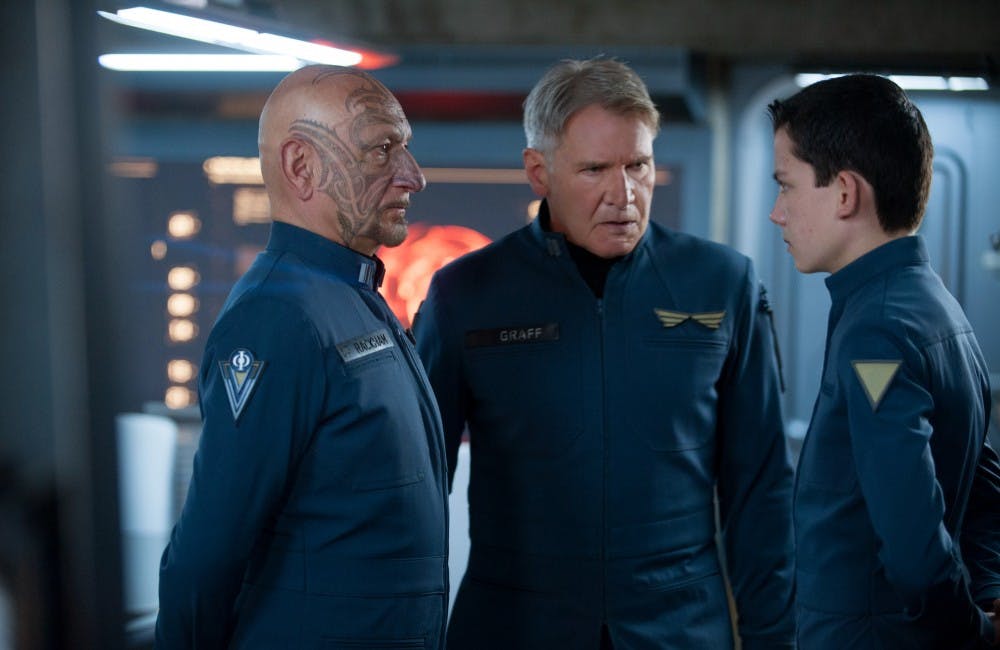The much-anticipated “Ender’s Game” finally came, but at the cost of bad acting from supporting roles, total disregard for character development, cheap attempts at humor and poor pacing.
The film is based on the military science fiction novel by Orson Scott Card and takes place in 2086. Earth is attacked by a race of giant alien insects called the Formics who kill millions before being repelled. About 70 years later, children are recruited and trained in the art of warfare at an orbital military academy called “Battle School.” The film follows a race to find the next military genius to lead Earth’s combined forces before the Formics return to finish what they started.
In comes Andrew “Ender” Wiggin (Asa Butterfield, “Hugo”), a cold, calculating child prodigy. Battle School commander Colonel Graff (Harrison Ford, “Indiana Jones”) enthusiastically offers to take him up as a recruit after witnessing Ender’s skill for strategy while fending off a group of bullies. Ender and the other new recruits are introduced to “The Game,” a zero-gravity sport where two teams fight against each other to conquer the other’s base.
The first half of “Ender’s Game” is concerned with Ender’s progression through Battle School and Command School, and the allies and enemies he makes along the way. It all ends up feeling more like Hogwarts in space than a military sci-fi thriller. In addition, Col. Graff, Ender’s instructor Sgt. Dap (Nonso Anozie, “The Grey”), and fellow cadet Petra (Hailee Steinfield, “True Grit”) constantly shower Ender with praise and remind him of how perfect he is. Nearly every interaction involving Ender and his comrades or teachers inevitably devolve into a cringe-worthy celebration of how Ender is essentially the second coming of Christ who will blow up all the evil aliens and be home in time for dinner.
The problem is that “Ender’s Game” thoroughly reeks of Hollywood. It’s been stripped of the book’s R-rated grit and stuffed back with almost every big-budget action movie cliché imaginable to make it more salient to audiences. The film is a stereotypical “hero’s journey,” complete with a training sequence with boisterous music, a love interest, and even “that” scene where the hero questions himself and threatens to quit his journey before being convinced otherwise.
Though a movie shouldn’t be rated on its ability to adhere to source material, much of the material removed from “Ender’s Game” is key to character development, effectively chopping off the movie’s legs. It’s difficult for what’s left of the original concept of “Ender’s Game” to stand as a well-composed story.
The last act deals with beautifully rendered space battle scenes as well as the emotional payload on Ender by being in command of it all, including scenes which were noticeably smarter and more well-done than anything in the movie so far. The film felt extremely rushed up to this point, making it clear that whoever wrote it wanted to speed past character development and dialogue to focus on battle scenes and graphical appeal. It’s a formula which many films before “Ender’s Game” have used, and they’ve all had the same pitfalls.
Still, well thought-out battle scenes and an exciting climax aren’t quite enough to redeem the movie from its shaky and awkward first hour and a half. It’s just enough, however, to bring the rating up from what would otherwise be a failing grade.





